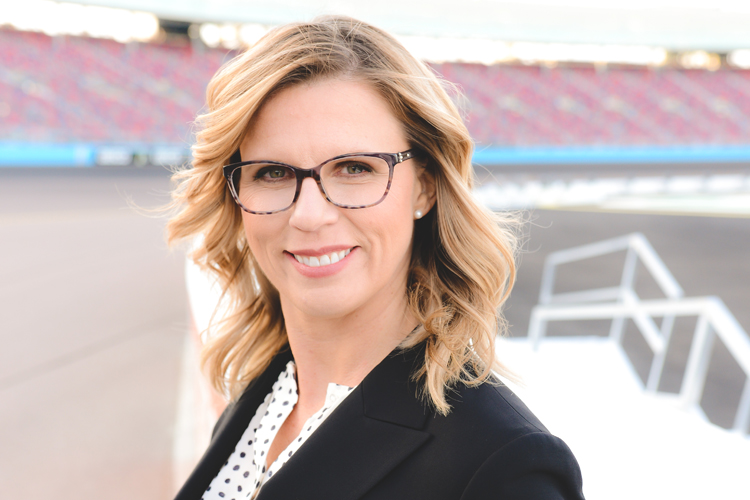Julie Giese has always been a fan of auto racing.
“I grew up on a dairy farm in Wisconsin, watching the Daytona 500 and NASCAR with my dad, who was a big Dale Earnhardt fan,” says the president of Phoenix Raceway. “Mid-way through college, I changed my major to marketing and that’s when I really started thinking about racing. It’s all about marketing. So why couldn’t I work in racing?”
When she graduated, she sent her resume out to all the racetracks and received “thanks, but no thanks” replies from everyone.
“Sports, in general, is so much about who you know,” Giese says, “so I was bullish and continued to build a networking base.”
Giese’s connections eventually landed her a job at Watkins Glen International and the rest, as they say, is history … literally. Giese is currently the only female president of a NASCAR track and has ushered Phoenix Raceway through a $178 million renovation that has created the best fan experience in the sport. Next up is another piece of history: Phoenix Raceway will host its first NASCAR championship race in November.
Az Business got Giese to slow down enough to answer a few questions.
Az Business: How were you able to get NASCAR to move the championship race to Phoenix?
Julie Giese: NASCAR has not been shy about the fact that they were interested in changing up the schedule. But the things that we had going for us is we have a race that has historically sold out and you want a strong crowd for a championship race. You look at the market we are in and Phoenix is a fantastic place to visit in November, especially for fans from the Midwest and Canada. But the thing that really set us apart is the redevelopment and the $178 million modernization that has really reinvented the fan experience.
AB: How has that modernization impacted fans?
JG: From the moment you walk through the gates, to the midway experience, to your seats and cup-holders, to the escalators, to having Wi-Fi throughout the venue, it’s redefined how a racetrack looks and feels. But the real game-changer is the infield experience, which takes the fan experience to a whole new level. Fans can literally walk into the garages and see teams working on cars and the drivers are in there interacting, taking selfies, signing autographs. All those things together created that perfect storm and put us on the map to host a championship race.
AB: What kind of impact will this race have on the Valley?
JG: There are a lot of things that come with a NASCAR championship. This is our Super Bowl in racing. This is a community that is used to hosting Super Bowls and Final Fours, so we want to make it a championship week versus three days at the racetrack. We plan to make it a celebration and showcase what Phoenix is all about and lean into the opportunities to educate people about NASCAR and what we do out here.




